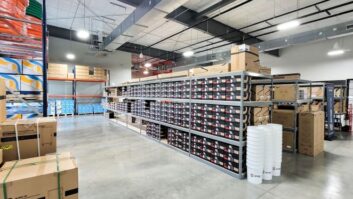 The pandemic has proven that people can and will do their work even when they are not in the office. Now, as businesses respond to employee demands for more flexibility and trust from their employers, hybrid working and asynchronous workflows have emerged – but what does this mean for the future?
The pandemic has proven that people can and will do their work even when they are not in the office. Now, as businesses respond to employee demands for more flexibility and trust from their employers, hybrid working and asynchronous workflows have emerged – but what does this mean for the future?
Some say that asynchronous work presents a great opportunity for the future of work, pivoting toward a bigger focus on employee empowerment. Early indications are that businesses using asynchronous workflows see an increase in employee morale and engagement because they are more mindful of peoples’ time and are seen to encourage a healthier lifestyle.
This broad and dynamic trend – where employees on the same teamwork at different times, in contrast to traditional office hours, and without the expectation of immediately responding to others – most definitely has benefits for both the employee and employer. Our research recently showed that over a third of European office workers believed asynchronous working would result in more purposeful and less distracting communication, and nearly two-thirds agreed it would create a better work life balance.
It also opens the talent pool across time zones for a more diverse team, facilitates better resource management, and has positive implications on costs, broader business strategy, and sustainability concerns.
However, though asynchronous working is being recognised as the future of work, a lack of sufficient technology solutions and trust has stymied the change. Over half of surveyed workers say they don’t have the tools needed to support this way of working. Many say they have to go into the office to access any good technology at all.
What is clear is that employers really need to close a gap in home working solutions. They certainly have an opportunity to do so with the highly effective collaboration tools available on the market, but an organisational shift in mentality is required too. Holistically speaking, there needs to be a culture of enthusiasm for asynchronous working from the top down that drives investment in technology that enables it.
AUTHENTIC IMPLEMENTATION
With data showing that European firms in general are struggling to authentically implement hybrid work, what sort of tech stack is needed to move forward?
To begin with, there is a need for technology that promotes best practice, flexible collaboration – tools that are easily accessible for employees from outside of the office, whenever they need it. An obvious example is cloud documentation. At-home solutions will also help remote workers communicate efficiently without wasting time operating tech. High-quality smartphones should be provided too.
Just as crucial are tech-based facilities within the office itself that enable easy and efficient collaboration as and when required. There are now integrated systems available that let people book meeting rooms, ‘huddle’ spaces and even specific desks near relevant colleagues for when they’re going to be in the office. These solutions also include a variety of IoT tech and sensors that facilitate better in-office comfort and resource efficiency. Lights can be switched off when rooms aren’t in use and temperatures can be controlled as per the desire of the employees actually present and help facilities managers efficiently control energy usage.
But technology is only one part of the puzzle, albeit an essential one. While technology empowers the change, organisations need to be open to it. IT and AV departments can offer solutions for both home and office use, but if they are to see the benefits of this style of working, business leaders need to trust their employees. There must be an instilled belief that teams will perform to the standard expected as long as they have the tools to facilitate them.
It is worth noting the ESG benefits of this new working paradigm, too. As ESG becomes an increasing business focus, companies should be inspired by the potential impact on their sustainability targets. Facilities managers can match energy spend with the workforce present at any one time, lessen rent costs by reducing office size, and cut down on individual carbon footprints by not having people commuting to a workspace every day.
Asynchronous working could not have been contemplated 20 years ago. In fact, before Covid-19, few imagined a world in which businesses who didn’t adopt entirely virtual operations would struggle to even survive, let alone thrive. However, the combination of robust advances in technology and a global event that has changed employees’ values and expectations forever has meant that flexible working must be embraced. Nearly a fifth of the workers involved in the study that delved into this topic said that they had left a job due to inflexibility. It’s safe to assume that number will continue to climb now that people have reason to expect flexibility from their employers.
With ways of working unlikely to return to pre-pandemic, we must look ahead and be prepared for how they will evolve. To remain successful, businesses must stay reactive and agile when it comes to supporting how their task force works best, and that includes providing them with the tools and trust they need for success.







